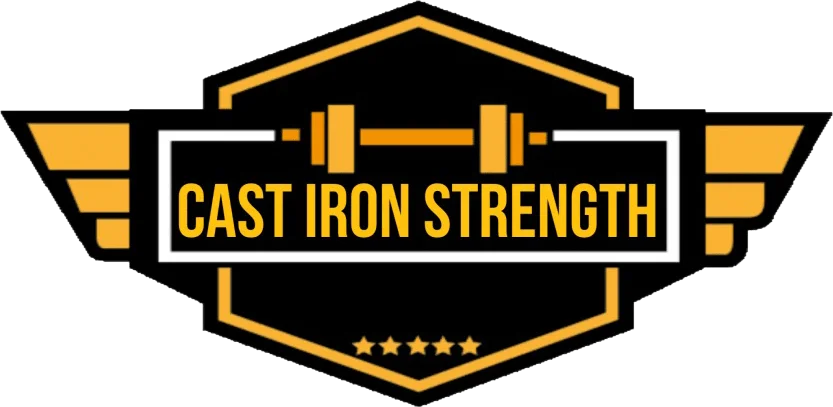TL;DR
No
Equipped lifting and steroids muddy the water
Lifting heavier things makes you stronger
Lifting higher volumes of heavy things makes you stronger
Chains and bands can be used for novelty in training
Speed or dynamic effort another gift from the deep south. So many people just include this kind of training in their strength or powerlifting programmes without any real thought. These guys said we should do it because they are strong we will do it!
maximal strengthWeb definitions
In maximal strength training we are interested solely on your ability to produce as much force as possible and exert it on an object (usually a barbell). If it takes you 20 minutes to deadlift 470 kg it doesn’t make you any less of a world record holder. Strength/Speed and Speed/Strength are your abilities to produce force quickly if you are a thrower or sports person your ability to produce force quickly is your most important attribute when it comes to sports performance since in most sports you only have a finite amount of time to react or move.
 If you are a powerlifter or you are training for maximal strength the rate at which you produce force is irelavent it is your ability to produce that force and the higher the levels the better a strength athlete you are going to be. If you are an athlete then you should develop all aspects of the force velocity curve (pictured above) to give you the best chance of transferring your strength and power training onto the field of play now if you are an athlete or you are not concerned with the maximal amount of weight you can lift in squat / bench / deadlift / overhead press then stop reading.
If you are a powerlifter or you are training for maximal strength the rate at which you produce force is irelavent it is your ability to produce that force and the higher the levels the better a strength athlete you are going to be. If you are an athlete then you should develop all aspects of the force velocity curve (pictured above) to give you the best chance of transferring your strength and power training onto the field of play now if you are an athlete or you are not concerned with the maximal amount of weight you can lift in squat / bench / deadlift / overhead press then stop reading.
Steroids and Equipment
Both of these things have a lot to answer for when it comes to getting information as a natural beginner or intermediate lifter trying to get advice and guidance. Much of the popular wisdom of training on the internet is based off the advice given by PED using and equipped powerlifting and it is not really relevant to 90% of the strength training and powerlifting population.
- Equipment makes the lifter strongest at the bottom of the lift and weakest at the top (the direct opposite of unequipped lifting)
- Equipped lifting takes a lot of time and effort and also puts a lot of stress on the body so any excuse to not suit up and lift maximal is probably a welcome addition.
- If you are a first time steroid user or constantly upping the amount you take anything and everything will make you stronger. Think of steroid use as being a novice again as in just come in and put more weight on the bar and everything works.
Maximal lifting for maximal strength (90 – 100+% of 1RM)
Lifting 90%+ weights is a skill in itself as anyone who has gotten stronger using a volume approach put their sets x reps into a 1RM calculator and then got disappointed when they fall short of their target. A lot of the strength adaptations that make you good at maximal lifting only really happen at maximal weights. How you lift a 300 kg barbell isn’t the same as how you lift a 150kg barbell so it would make sense that lifting in this range will make you better at it.
However your ability to train at 90%+ RM and not get beat up or achieve sufficient volume is limited and why it is almost always designed to peak a lifter (think the last 3 weeks of russian squat routine – 5×5 / 4×4 / 3×3 / 2×2 /1×1 ). What we are effectively doing is dropping training volume (reducing tiredness) and upping the intensity (increasing your skill with heavier loads).
This is the best way to exhibit strength. Lifters who train with low daily volume but high frequency (every day!) can accumulate enough volume whilst lifting in the 85-100% ranges to not only train the skill of lifting heavy but also feed off the mechanical effect that volume has on the body (increased muscles mass etc).
Increasing our volume for maximal strength (80 to 95% of 1RM)
What if I can only lift 2x a week but want to get as strong as possible what can I do? The most common way to train is to use a set x reps scheme and gradually manipulating the amount of sets or reps performed (adding reps or sets to workouts) to increase the training volume or just doing the same sets x reps (5×5 stronglifts as an example) and letting the increase in training loads ramp up the training volume (100 x 5 x 5 – 102.5 x 5 x 5 – 105 x 5 x 5) etc. Both of these approaches do practically the same thing.
You can lift the same load for 9 workouts in a row and realise a 5%+ gain in strength easily.….
 Lets say you lifted 100 kg for 25 reps last week… lift it for 30 reps this week and 35 reps next week. If you do this and recover (and if 100 kg is in the 80 – 95% reps range) you will get stronger on this programme guaranteed. However eventually one of these things is going to happen
Lets say you lifted 100 kg for 25 reps last week… lift it for 30 reps this week and 35 reps next week. If you do this and recover (and if 100 kg is in the 80 – 95% reps range) you will get stronger on this programme guaranteed. However eventually one of these things is going to happen
- 100kg is too light to effect any adaptation (it is now 70% or below of your 1RM because you are so freaking strong)
- Fatigue bites you in the ass. Those 10×10 workouts are starting to take their toll!
- You get injured because you move like a moron.
As long as you make meaningful increases in weekly training volumes in the correct intensity zone and recover from it you’re going to get stronger welcome to all of programming ever.
The Swole Zone (60 to 80% 1RM)
Increasing your total volume / time under tension / muscular damage caused by resistance training makes up pretty much 90% of any hypertrophy that’s why all of the cable monkeys have big arms and chests while they can only bench press 110kg if they are the strong dude in the group. The only adaptations they are inducing are mechanical they are causing enough muscular damage to induce a hypertrophic response on the muscles they are working it doesn’t make them better at lifting 90%+ weights but it does make their arms fill up their shirts more.
The Jacking off Zone (0 – 60% 1RM)
Once we have dropped out of the hypertrophy training ranges we are left with pretty much what amounts to a waste of time your limiting factor now becomes your muscular endurance and if the sets last for long enough your cardiovascular fitness. Your either doing crossfit for crazy amounts of reps, your trying to optimise your power output and training for sport (while wasting your fucking time another article for another day perhaps) or
Your performing speed work which basically amounts to
- lifting with stupid form you would never use with a 90%+ load
- Making retarded noises trying to explode a bar that is light enough you could throw it but not following through with your intention and slowing down the movement towards lock out because if you tried to do jump squats for speed work you would look like a fucktard. (where in this situation you might not look like a fucktard but you are training like one).
- Not accumulating enough volume to induce a training effect because you are lifting 100kg for reps of 2 when you can comfortable squat 180kg for 2.
- Doing the least effective conditioning workout known to man because you are performing 10 sets of 3 using 50% of your 1RM with 90 seconds break because you want to get this boring shit over and done with.
Bands and chains a waste of time then?
Far from it if you use bands and chains to provide enough load to make it a challenge to lock out while still using a good hard training load you can definitely provide a novel training stress that will get you stronger. If your an equipped lifter bands and chains can mimic what it’s like to lift in equipment without having to be fucked with getting 25 of your mates to oil you up and squeeze you into your 200 pound gimp suit. They offer a lot of good options for variety and can be used effectively. But if your using them for “dynamic effort” you’d be better off just putting some more load on the bar and getting on with a proper workout if maximal strength if your goal.
Hope this article has helped some people get their heads around what is a needlessly complex topic.
Marc





